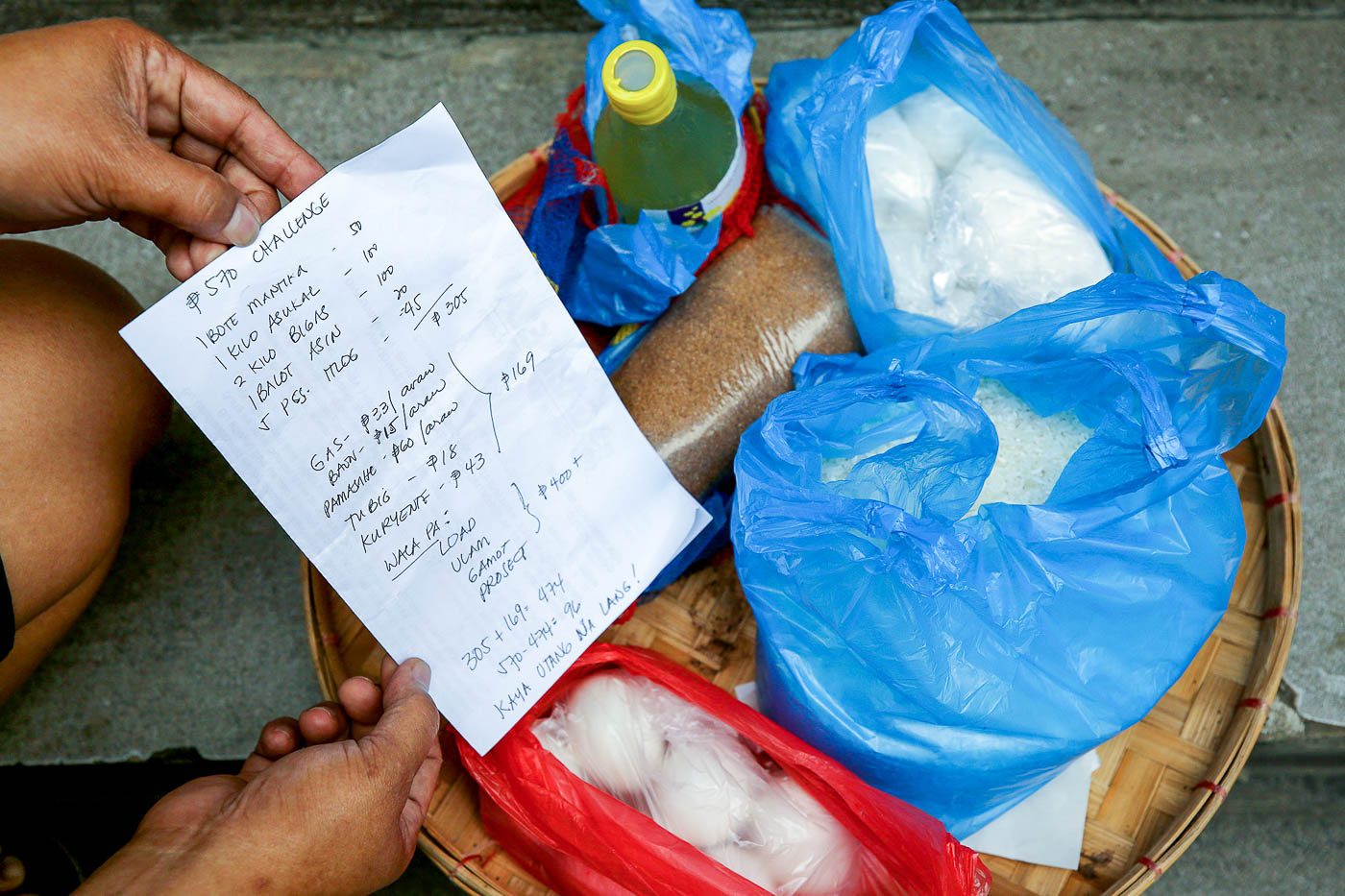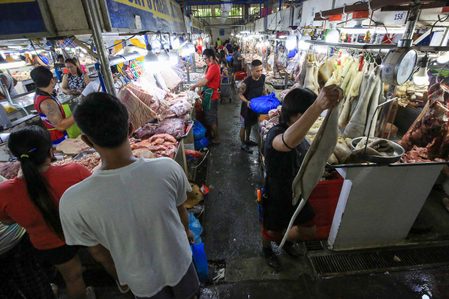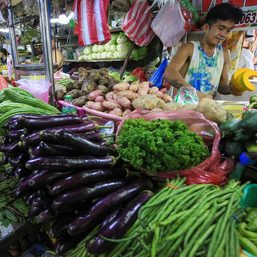SUMMARY
This is AI generated summarization, which may have errors. For context, always refer to the full article.

MANILA, Philippines – Food prices have continued climbing for months amid shortages, a weak peso, and disruptions to the global supply chain. October was no different, with inflation for the month racing to 7.7%, the highest in nearly fourteen years.
Most consumers have already felt the recent food price hikes eating into their lunch money and shrinking their pantries. But for wet market vendors, inflation threatens their entire livelihood.
Scenes at the Moonwalk Talipapa and the adjacent Suki Market in Las Piñas one Saturday morning both revealed a slow-moving, sleepy crowd. Vendors hawked their freshest hauls but few buyers flitted from stall to stall. People mostly lingered around the spaces closest to the sidewalk. Deeper inside the palengke, there was hardly anyone at all – vendors or buyers.
This has been a common sight ever since the COVID-19 pandemic had disrupted the usual heavy foot traffic along the area. Although the palengke remained open throughout the lockdowns, strict protocols and a general fear alike had reduced the buyers who frequented the stalls.
Mary* recounted that while she and her fellow live seafood vendors have steadily recovered, the market was still far from returning to its pre-pandemic busy thrum.
“Noon, mabili; talagang mabili. Halos wala sa kalahati ‘yung [benta] ngayon…. Matatagal na lang [ang natira]. Nagsi-alisan na ‘yung iba kasi sobrang lugi. Walang puhunan sila. E kami, survive lang kami,” she said.
(Before, business was brisk; really brisk. Now, we hardly sell even just half of what we used to sell…. The ones left are those who’ve been around for a long time. The others left since they were already losing a lot of money. They had no more capital. As for us, we’re just surviving.)
Vendors also shared that many of their suki or regular customers lost their jobs during the pandemic, putting their families into financial distress and consequently, tighter food budgets. At the peak of the pandemic, the Philippine Statistics Authority reported that one out of every six Filipinos was unemployed. (READ: Inflation pushes employed Filipinos to seek more work hours)
Inflation fears
Although the economy has since opened up, vendors now contend with the problem of food inflation. Food prices have generally gone up by 9.8% since last year, but the prices of some commodities have risen even faster. Following the local sugar supply crisis, cane and beet sugar prices have skyrocketed to 72.5% compared to October 2021. Meat prices have also risen by11.5%, and seafood prices are up by 9.4%.
Mary shared that the price of galunggong has doubled. In the past, the best quality ones fetched around P60 per kilo. Now, fish of the same quality sold for up to P120 per kilo.
As buyers cut back in the face of rising prices, limited employment opportunities, and the added expenses of in-person schooling, demand has fallen. In response, vegetable vendors like Jane (not her real name), have had to reduce stocks.
“’Pag dinamihan mo, ‘di naman kaya bilhin ng tao, lalo na kapag mahal. Budget lang kasi sila,” she explained.
(Even if you keep more on hand, people wouldn’t be able to afford them, especially if they’re expensive. People are on a budget.)
Jane* had to stop selling some vegetables, such as white onions, because they got too expensive. Following a nationwide shortage, the price of white onions had reportedly climbed to as much as P800 per kilo in the Moonwalk markets. Jane was also considering removing red onions from her stall. In the meantime, she has begun selling them tingi-tingi, in small packets of three to keep prices affordable.
Surviving the season
With the approaching Christmas season, combined with damages from Severe Tropical Storm Paeng (Nalgae) driving food prices, vendors anticipte harder times ahead.
“Sabi nila tuloy-tuloy na daw ‘yung pagtaas [ng presyo ng bilihin]. Sana huwag, baka hindi na tayo makakain,” Jane said, half-joking. (They say prices will continue to go up. Hopefully, that wouldn’t be the case; otherwise, we may not be able to eat at all.)
It’s especially difficult for vendors who are just starting out and haven’t established a set of regular customers yet. Grace*, shared that she started selling fruits and fish about a year ago. Weak supplies and high prices have made it hard to earn a living.
“Konti. Mahal. Katulad ngayon, mahal. Depende na lang sa ‘yo kung paano i-bebenta para tumubo ka,” she said. (It’s few and expensive. Like now, it’s expensive. It’s up to you how to sell to make a profit.)
Many vendors have already packed up permanently, leaving a number of stalls eerily empty. Some could no longer afford the daily rent of P1,000 – a high price that offered no assurance of a steady stream of customers. Susan* was especially concerned about the declining number of buyers since her stall was located deeper in the palengke.
“Medyo matumal dito. Matumal dito kasi nasa looban kami. Sa labas lang sila,” she said. (It’s slow here because we’re deeper inside. They usually just stay outside.)
With mounting challenges and a lack of government assistance programs, vendors have been left to bear the burden of the country’s precarious food security situation. While prospects remain bleak, the ones we talked to don’t intend to close shop any time soon.
“Okay lang kahit matumal. Kaya pa rin, kahit hindi na kaya,” Mary said with a strained smile.(It’s okay even if business is slow. We can still cope, even if we can’t.) – Rappler.com
*Interviewees’ names have been changed.
Add a comment
How does this make you feel?



![[In This Economy] Can the PH become an upper-middle income country within this lifetime?](https://www.rappler.com/tachyon/2024/04/tl-ph-upper-income-country-04052024.jpg?resize=257%2C257&crop=295px%2C0px%2C720px%2C720px)






There are no comments yet. Add your comment to start the conversation.